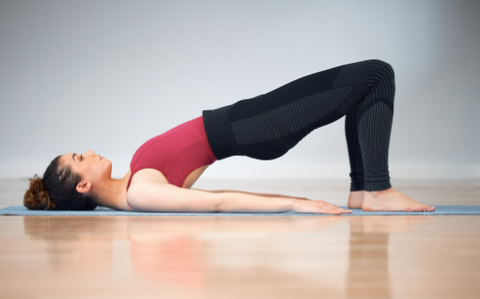
How to avoid Disc bulge or Herniated Disc?
Share

"Deep within the intricate design of your spine lies a silent hero - the intervertebral discs. These humble structures play a crucial role in cushioning the vertebrae, allowing for flexibility, shock absorption, and smooth movement. However, when these discs face excessive pressure or injury, they can turn from silent supporters to vocal sources of pain and discomfort. Enter the world of disc bulge and herniated discs, conditions that affect millions worldwide, disrupting lives and routines. To avoid a disk bulge or herniated disc, you can follow these tips...
1. Exercise Regularly: Strengthening your core muscles, that target the abdominal muscles, such as partial crunches, planks press-up back extensions, leg raises, Gentle stretches such as cat-cow stretch, and hamstring stretches can help in improving flexibility and reduce the risk of a bulging disc from reoccurring.
- Back Muscles: Strengthening the muscles in your back, especially the lower back, can provide better support for the spine and reduce pressure on the discs.
- Regular exercise helps in strengthing the muscles supporting the spine. Stronger muscles provide better support for the spine and reduce the risk of further injury or worsening of a bulging disc
- Excess body weight puts additional pressure on the spine, especially the lumbar (lower back) region where most disc bulges occur.
- By maintaining a healthy weight, you reduce the load on the discs, which can alleviate pain and discomfort.

- Lifting weights improperly can significantly increase the risk of developing a bulging disc. Incorrect form and technique while lifting weights can put excessive strain on the spine, leading to potential injuries like bulging discs
- Lifting weights that are too heavy for your current strength level can lead to improper form and increased risk of injury.

- Good posture helps distribute weight evenly across the spine, so while sitting, standing, walking, or running it is crucial to reduce pressure on your spine and discs. Keep your head up, shoulders back, and spine straight. Proper alignment of the spine reduces the risk of excessive strain on the discs, preventing bulges or herniations.
- Take regular breaks from sitting or standing every 30 minutes to an hour.
- Perform gentle stretches or short walks to alleviate stiffness.
5. Get Sufficient Sleep: Aim for a solid eight hours of sleep to allow your body to heal properly after physical activity and maintain healthy hormone levels.

6. Avoid Inflammatory Foods: Stay away from foods high in sugar, refined carbohydrates, and trans-fats as they can weaken spinal vertebrae and discs. Opt for an anti-inflammatory diet rich in tomatoes, olive oil, leafy green vegetables, nuts, and fatty fishes.

7. Quit Smoking - Smoking restricts blood flow and narrows blood vessels, which limits the delivery of essential nutrients and oxygen to the spinal discs which can lead to degeneration of the spinal discs over time. Degenerated discs are less able to absorb shock and maintain proper spinal alignment, leading to conditions such as herniated discs or bulging discs.
8. Regularly Change Position - Staying in the same position for extended periods can cause the spinal discs to compress unevenly. This can lead to disc bulges, herniations, or degeneration over time.Movement helps improve blood circulation to the spine, which in turn delivers essential nutrients and oxygen to the spinal discs.So,try to stand up, stretch, or walk around every 30 minutes if you have a sedentary job or lifestyle. Incorporate gentle exercises or stretches that promotespinal flexibility and strength.

By incorporating these lifestyle changes such as exercising regularly, maintaining a healthy weight, practicing safe lifting techniques, improving posture, getting enough sleep, avoiding inflammatory foods, quitting smoking, and changing positions frequently, you can reduce the risk of developing a bulging disc or herniated disc.
